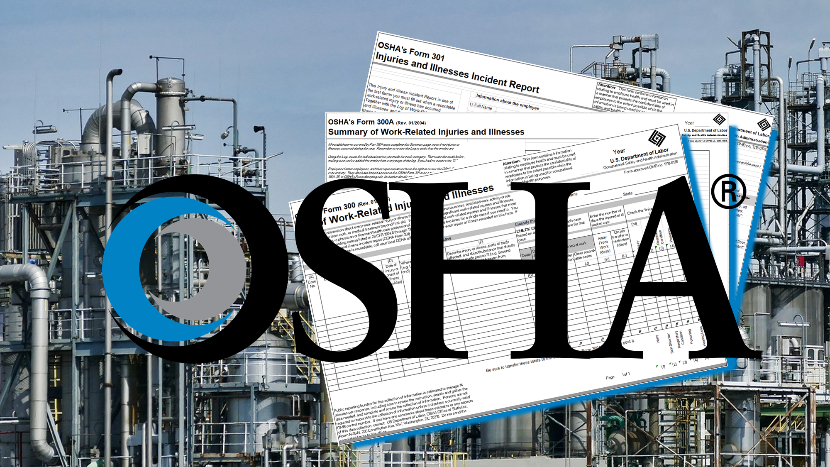“OSHA has determined that…the Form 300A data are sufficient for enforcement targeting and compliance assistance at this time.” — OSHA in 84 FR 392, 25-Jan-2019
Many have a hard time distinguishing between an injury that is OSHA “recordable” and an injury that is OSHA “reportable”. “Recordable” means that an employer must complete a Form 301 incident report for any qualifying injury or illness, record the injury or illness in Form 300—the Log of Work-Related Injuries and Illness, and summarize the injury or illness in Form 300A, Summary of Work-Related Injuries and Illnesses.
The summary, Form 300A, differs from the log, Form 300, in that it doesn’t contain any personal information about the employee who suffered the injury or illness.
Employers must keep these forms on file and produce them when requested by an OSHA inspector. In addition, employers must post Form 300A, the summary without personal information, in a conspicuous place from February 1 through April 30.
“Reportable” means that an employer must tell OSHA about the injury or illness.
What is recordable is staying the same. What is reportable is changing, as of January 1, 2024.
What’s Changing?
Before 2016, there was no routine reporting. Just incidental reporting. Originally, employers were required to report work-related fatalities and work-related incidents that resulted in three or more hospitalizations. The reports were to be made within hours of the fatality or injury. In 2014, OSHA changed that incidental reporting requirement to include amputations, losses of an eye, and reduced the number of hospitalizations that needed to be reported from three to one.
In 2017, OSHA began requiring routine annual reporting for employers who were required to keep records. Those with 250 or more employees were supposed to report their Form 300A to OSHA annually, along with information from their Forms 300 and 301. Establishments with 20 or more employees (up to 250) also had to report their Form 300A to OSHA annually, if they were on a list of SIC codes. That list of NAICS codes, found in Appendix A of 29 CFR 1904 Subpart E, included manufacturing, which in turn included all facilities in the chemical process industries (CPI).
Note: The list of NAICS codes in Appendix A is changing a bit. NAICS 4523, General Merchandise Stores, including Warehouse Clubs and Supercenters, has been added, while NAICS 4529, Other General Merchandise Stores, and NAICS 7213, Rooming and Boarding Houses, have been dropped.
There were legal challenges to the reporting of information from Form 300 and Form 301, so OSHA dropped that requirement.
But now it’s back. At least for some.
Form 300 and Form 301
Effective on January 1, 2024, certain establishments with 100 or more employees will be required to report information from their Forms 301 (the incident reports) and their Form 300 (the log). The establishments that must report are those that are in one of the 105 NAICS codes listed in the new Appendix B to 29 CFR 1904 Subpart E. Those NAICS codes include 3261, Plastic Product Manufacturing, and 3262, Rubber Product Manufacturing. Those NAICS codes don’t include anything from petroleum refining or chemical manufacture, however.
So, most of the CPI is going to be unaffected by the new regulations.
Employee Privacy
OSHA intends to post the information that it collects, so that any interested person or organization will have access to it. Employers have raised concerns about protecting the privacy of employees, and OSHA acknowledges those concerns.
An important distinction between Form 300A (the summary) and Form 300 (the log) and Form 301 (the incident report) is that Form 300A contains no personal information about injured employees. Recognizing that distinction, OSHA is not requesting that employers submit Form 300 and Form 301. Instead, they are requesting information taken from those forms. In particular, they are requesting that the information from Form 300 and Form 301 that is submitted not include employee and healthcare provider names and addresses, information that is on the forms.
If OSHA doesn’t have the information, it can’t post it, even inadvertently.
Have a Look For Yourself
It is likely that most of us in the CPI will be unaffected by the OSHA’s new rules about reporting injuries and illnesses. Nonetheless, there is often a lot of uproar associated with any change. Undoubtedly, there will be unscrupulous third parties who will see this as an opportunity for fearmongering and consulting fees. Don’t be taken in.
The final regulation, along with its preamble, was just published in the Federal Register.[FR Doc. 2023-15091]. Before you decide you have to do something about it, you may want to have a look at it yourself.
